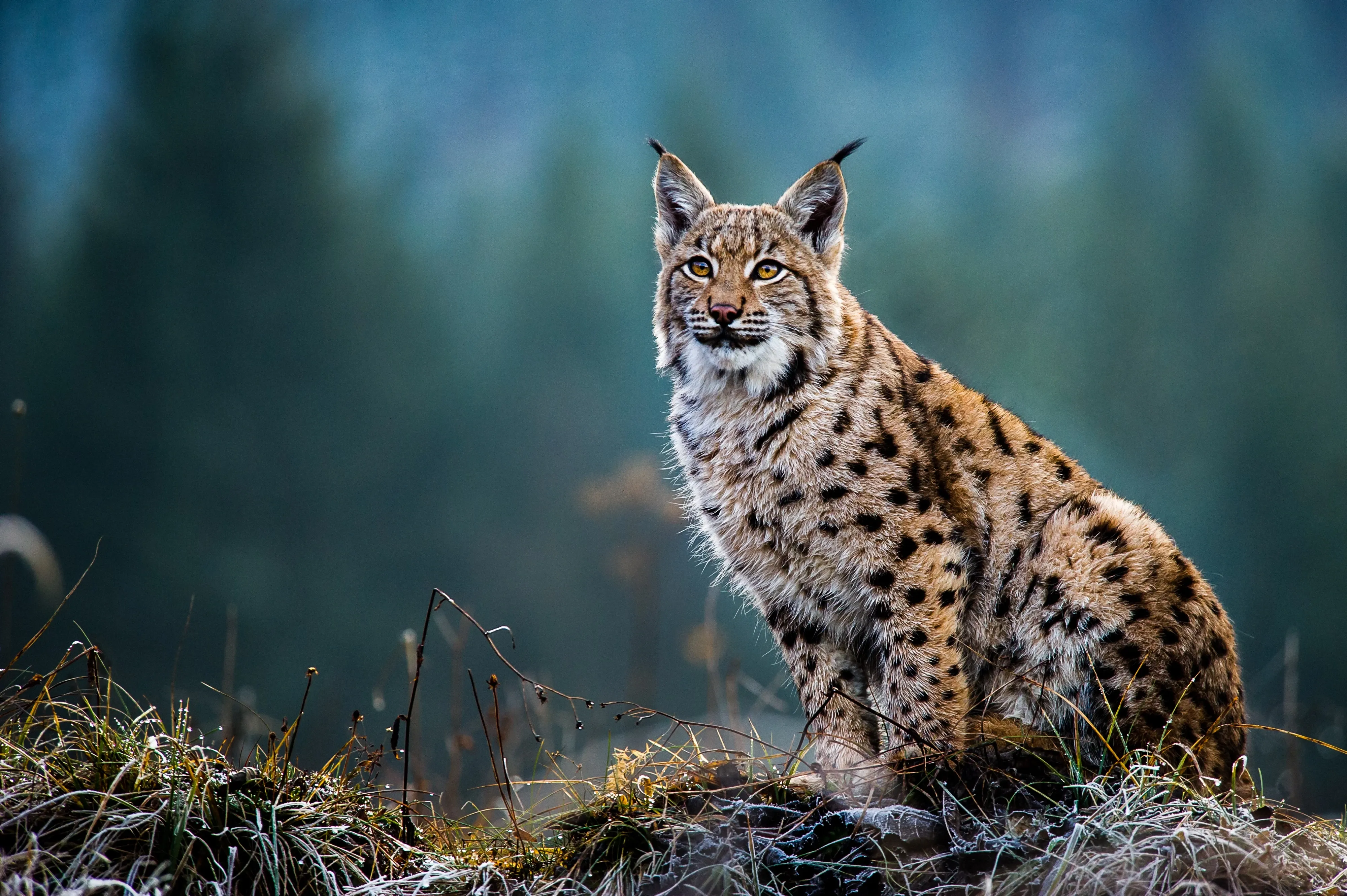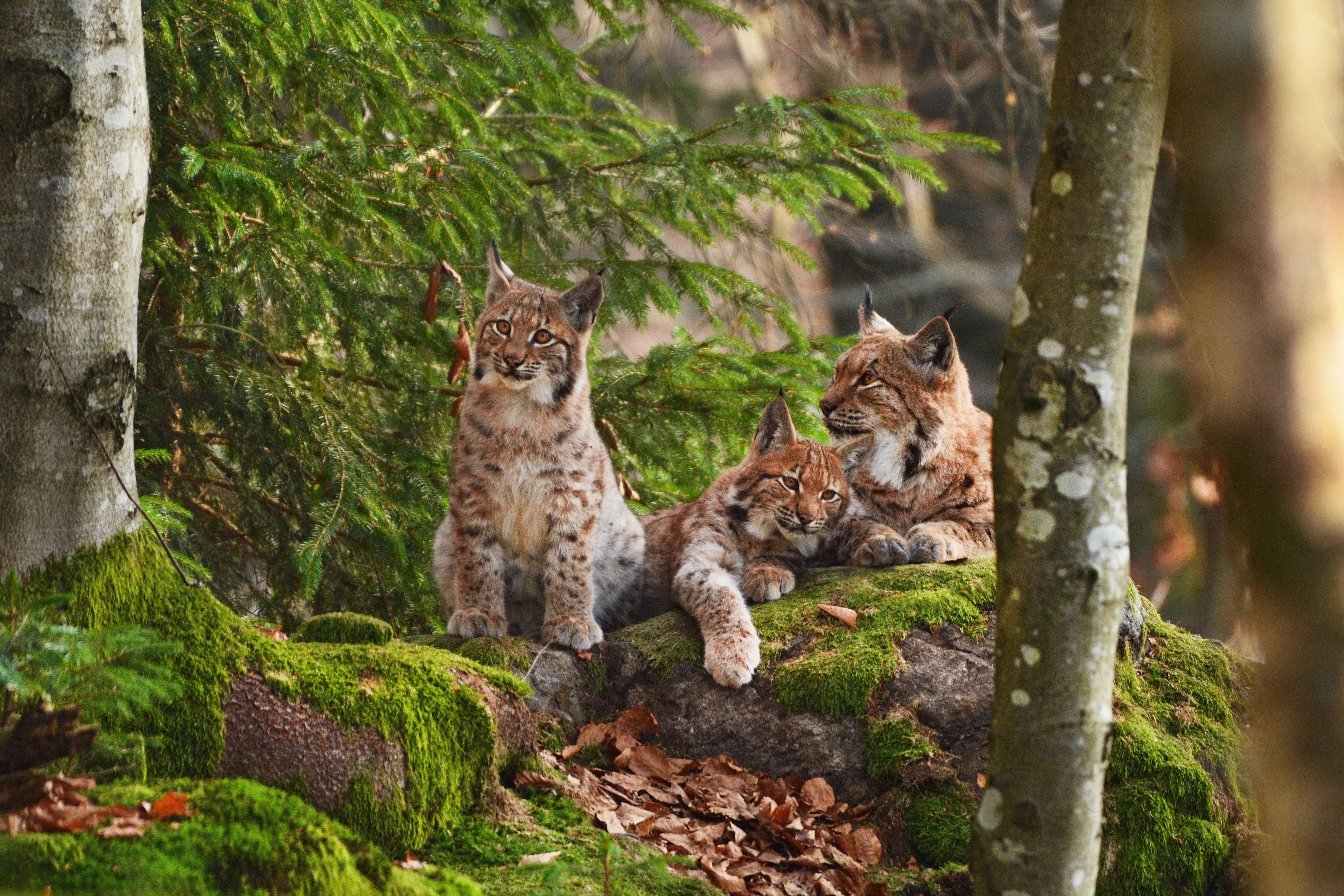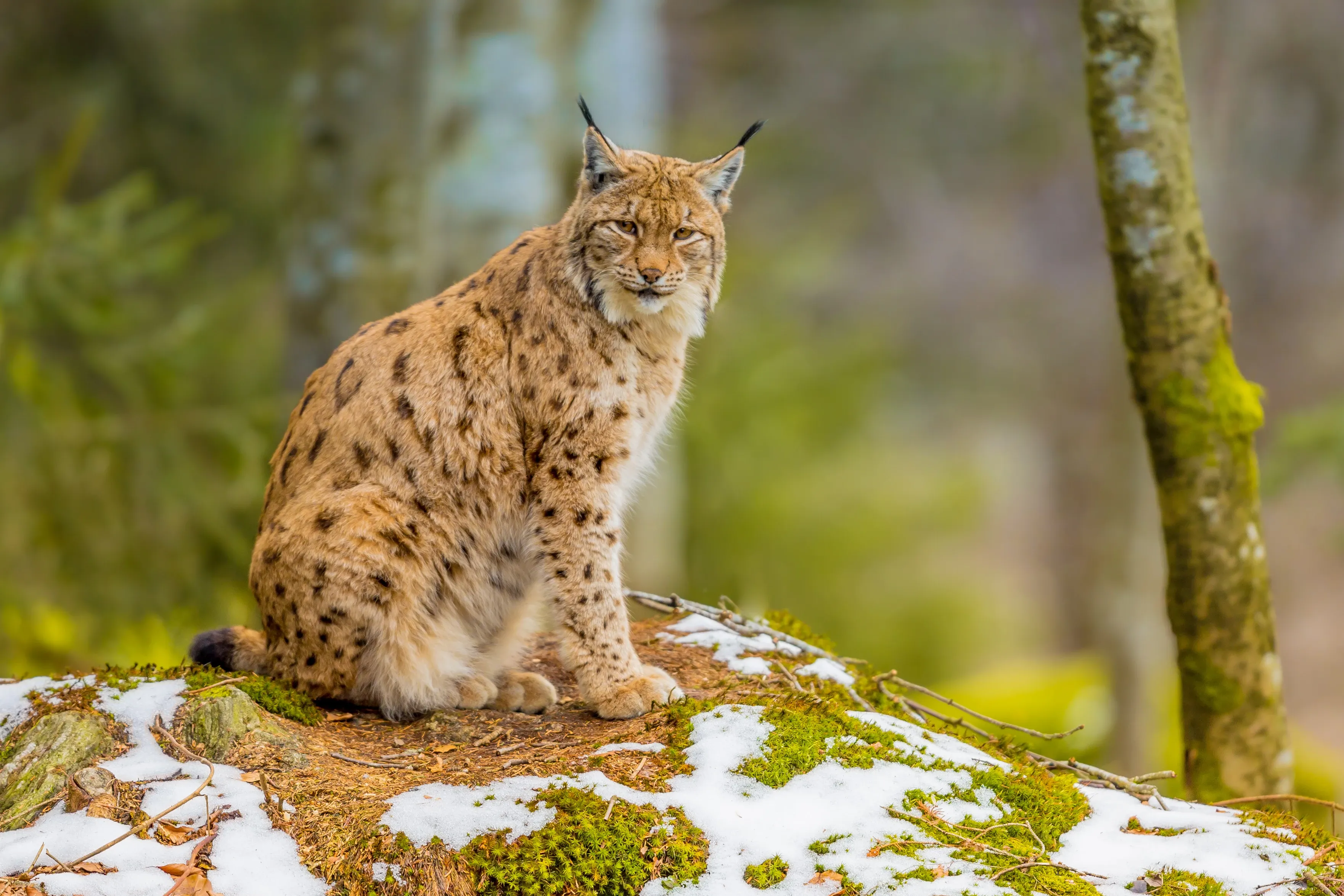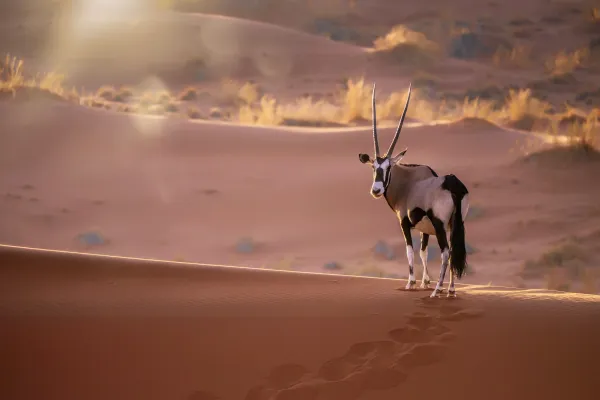Species Introduction: The Eurasian lynx
Reintroducing Europe’s largest big cat: The majestic big cat has been reintroduced to ancient forests throughout Europe, and is making an impressive come-back.
A striking big cat with dense fur and tufted ears, the Eurasian lynx is perfectly adapted for roaming Europe’s forested landscapes. Following persecution, the predator’s resurgence in several European countries is a story of conservation optimism, and a great example of successful rewilding projects.

In this article, we celebrate modern-day reintroduction programmes, with a focus on the elusive Eurasian lynx, and consider their benefits for both the natural ecosystems and the travellers and adventure seekers who are lucky enough to enjoy the remarkable landscapes they help to shape.
Fact sheet Eurasian lynx
- Scientific name: Eurasian Lynx
- Common name: Lynx lynx
- Order: Predator (Carnivora)
- Family: Felidae
- Characteristics: Europe’s largest big cat, with a dense fur coat and tufted ears
- Size: Up to 100cm long
- Weight: Up to 21kg (71lb)
- Life span: 10-15 years
- Distribution: Mountainous regions of Europe and Central and East Asia
- Habitat: Mixed forest, deciduous forest and thick scrub
- Range: Up to 1800km2
- Diet: Deer and small mammals
- Social Status: Solitary
- Conservation status: Least Concern
The lynx’s demise
Lynx were once found across Europe, living in large forest and forest steppe regions of central and northern Eurasia. With habitat destruction and hunting pressures, the species began to suffer and faced extinction in many parts of Europe by the early 20th century. Hunters killed lynx for their fur and meat, and farmers and gamekeepers persecuted them for fear of the cats killing their animals. In the mid-20th century, their distribution reached its lowest point, with no populations remaining in western Europe and only a few occurrences in Scandinavia, the Baltic States and the Balkans.
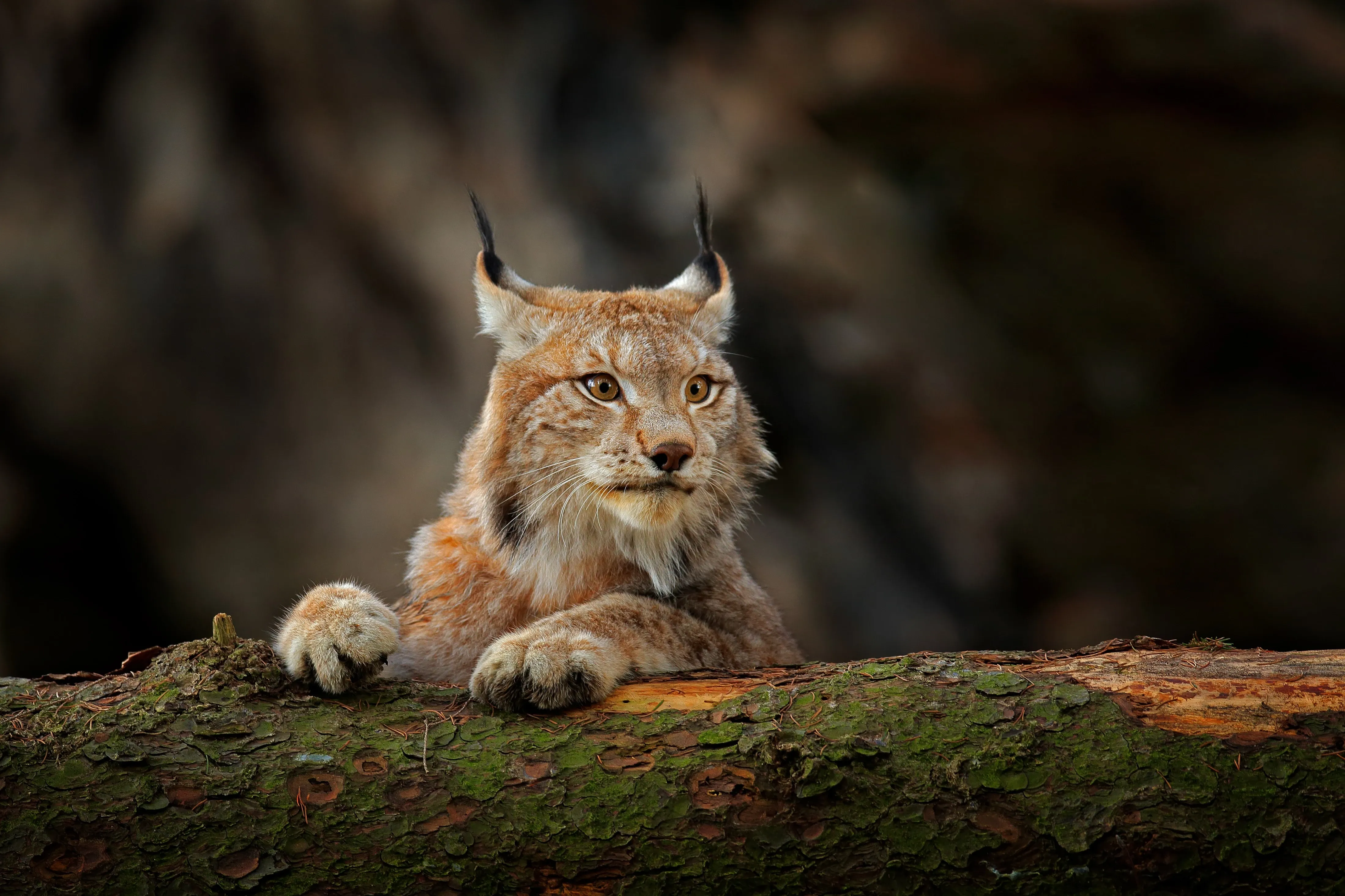
Why are lynx important?
The lynx’s majestic appearance isn’t just for show; Eurasian lynx have adapted over many thousands of years to sit at the top of Europe’s food chain, as an apex predator. Their ear tufts help the cats to hear better by amplifying and funneling sound while offering extra camouflage in the foliage. Their dense coats allow them to cope with low temperatures and thrive in rugged, mountainous regions.
Their status as an apex predator means lynx have considerable influence over the food chain; they control prey populations and, in turn, the dynamics of the whole ecosystem. Their diet consists primarily of herbivores like deer and small mammals. By keeping these populations down, they prevent overgrazing and help to protect the delicate balance of plant communities that support a great range of other wildlife species. They are flexible with their diet, allowing them to survive in various habitats, and even scavenge on carrion when it is available (which helps the ecosystem further still, by facilitating the recycling of nutrients).
»Their status as an apex predator means lynx have considerable influence over the food chain«

The big cat’s resurgence
When the importance of the Eurasian lynx to ecosystems was recognised, conservationists began to campaign for efforts to help the mammal recover in its past habitats. It is no easy feat to reintroduce an apex predator, and there was lots of work to be done before any lynx could be moved. Regeneration of European forests was key to the initiative; with forests restored, the lynx’s prey population could thrive. Following lots of research, habitat restoration work, alongside an end to the persecution, was the first major step in the recovery of European lynx populations.
Reintroduction initiatives spread across Europe, with key projects in Germany, Switzerland and France leading the way. Conservationists had to overcome a number of hurdles – most notably, conflict with farmers who were concerned about livestock predation, worries about human-lynx conflict, and concerns about the genetic viability of populations. With a combination of scientific research, community engagement and the creation of new policies to facilitate the co-existance of lynx and people, success stories began to arise.
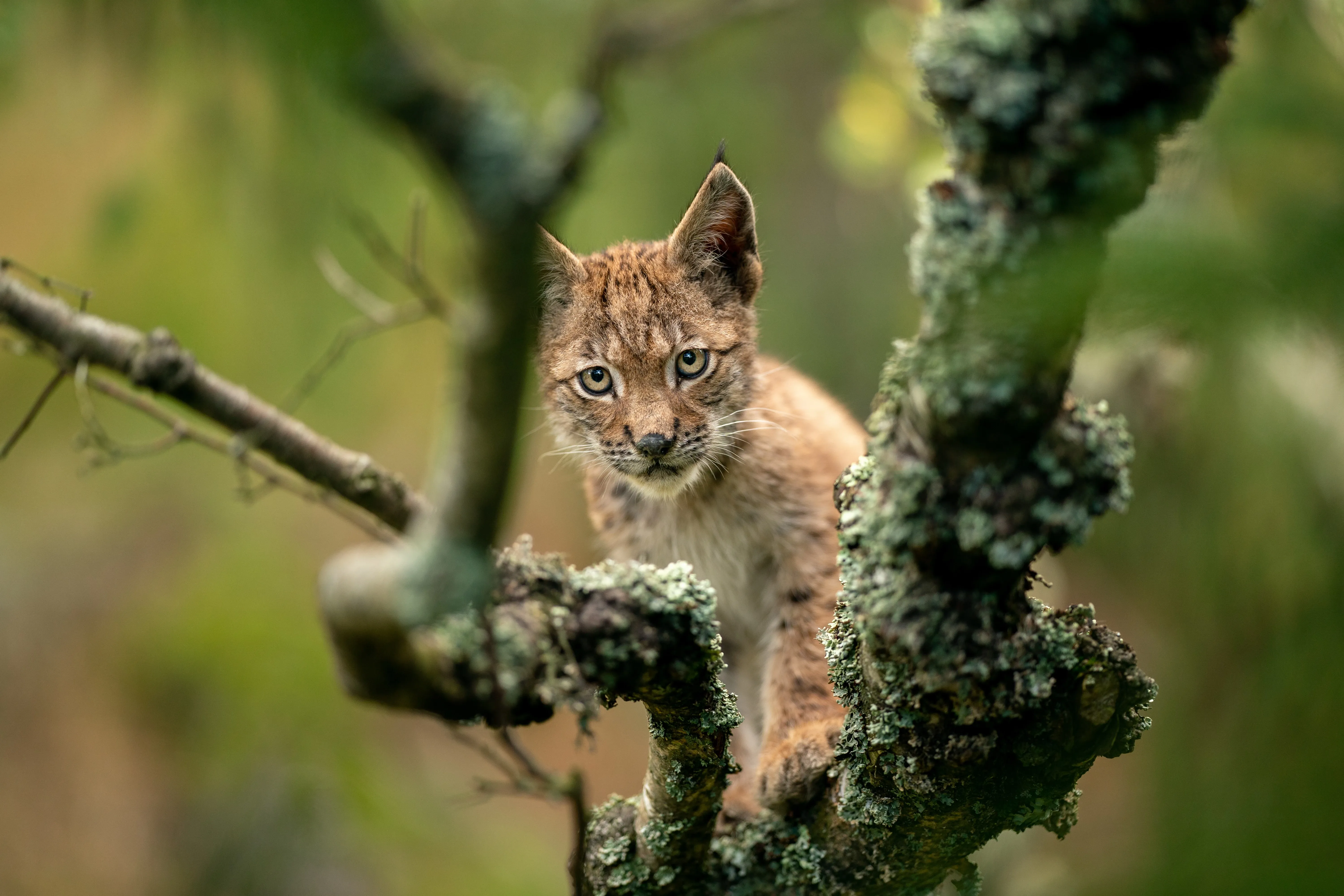
Today, there are thriving lynx populations in the Swiss Alps and Germany’s Bavarian Forest National Park, where lynx populations were completely decimated. The populations continue to provide vital support to the ecosystems, preying on smaller mammals and promoting the health and resilience of the native wildlife.
Interesting facts & trivia
Where are most Eurasian lynx found?
The species' stronghold is in Russia.
How many species of lynx are there?
There are four species of lynx; the Eurasian lynx is the largest.
When are they active?
Lynx sometimes hunt during the day, but are mostly nocturnal or crepuscular (active at dawn and dusk).
Visiting the Eurasian lynx’s habitat
The delicately balanced forest ecosystems that the lynx calls home include some of the most impressive landscapes in Europe, and can make incredible destinations for nature lovers and visitors keen to learn more about ecosystem-wide conservation initiatives in Europe. The Eurasian lynx is an elusive species and does not pose any danger to humans and in many of the regions where it has been reintroduced, it is possible to find guided tours with wildlife rangers to learn more about the local conservation efforts, and perhaps even spy a lynx through the treescape.
1. The Swiss Alps
Lynx have regained a foothold in the stunning Swiss Alps, where ancient forests meet alpine meadows. The snow-capped peaks provide the perfect backdrop for a hiking experience in the wilderness, and visitors to the Swiss National Park and the Parc Ela might just be leaving their footprints alongside those of the elusive Eurasian lynx. While visitors are unlikely to find themselves face-to-face with a lynx, there are guided wildlife tours in the Alps that will heighten your chance of a sighting.
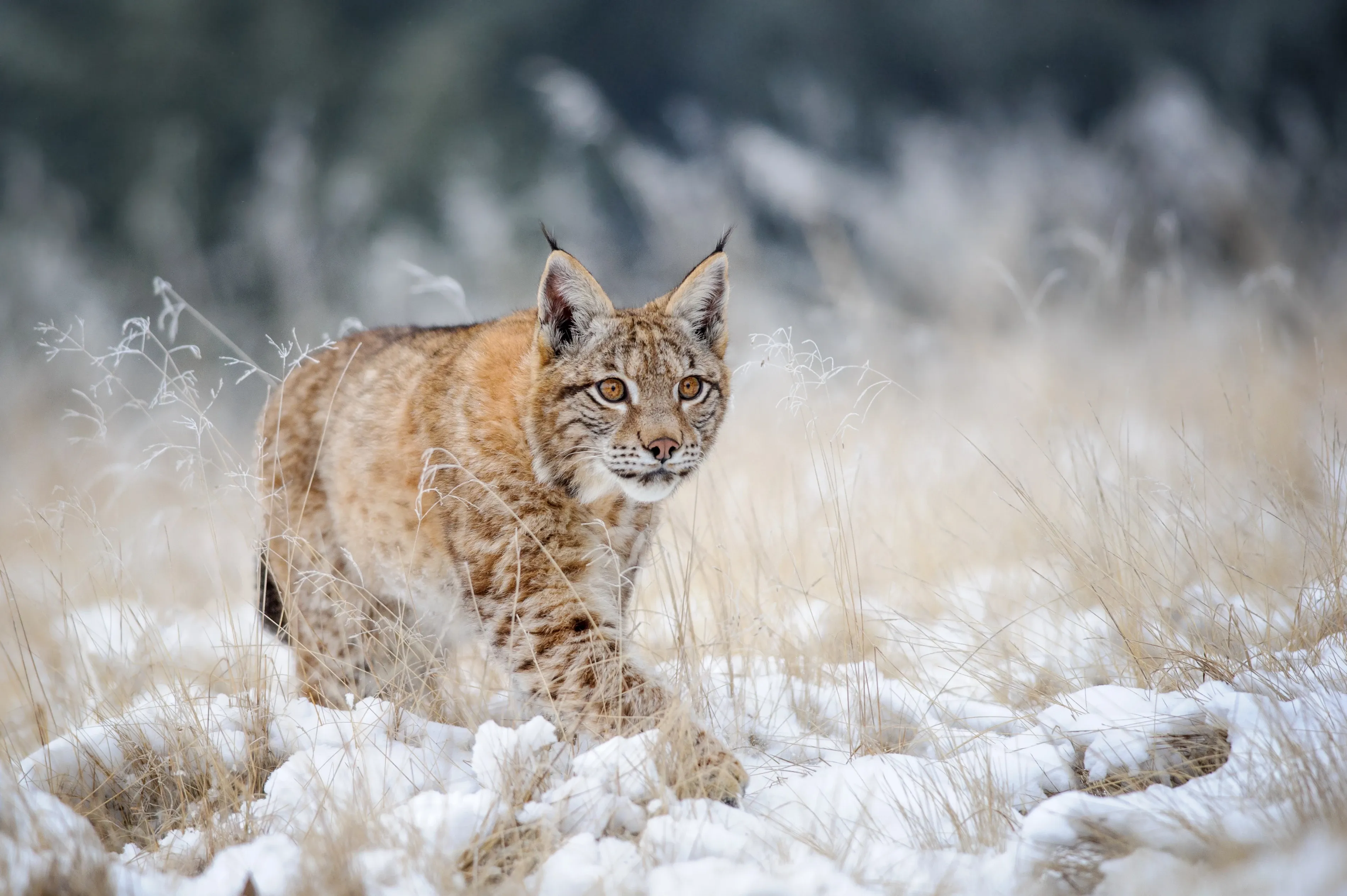
2. The Bavarian Forest
Germany’s native woodlands and meandering streams are also home to a population of Eurasian lynx, which have reclaimed their place at the top of the forest’s food chain. Visitors to the Bavarian Forest bask in the region’s wild tranquility. There is plenty of choice when it comes to solo walking routes, but visitors can also enjoy guided hikes and wildlife safaris, where experienced rangers will search out lynx tracks and, perhaps, lead you to a sighting of the wild cat.
3. The Carpathian Mountains
Today, Eurasian lynx roam the magical Carpathian Mountains alongside wolves and bears. Visitors to the region’s national parks, like Tatra National Park in Slovakia and Bieszczady National Park in Poland, will share their wild experience with a diverse range of native flora and fauna. These rugged peaks, ancient forests and alpine meadows offer the perfect destination for nature lovers hoping to reconnect with the European wilderness.
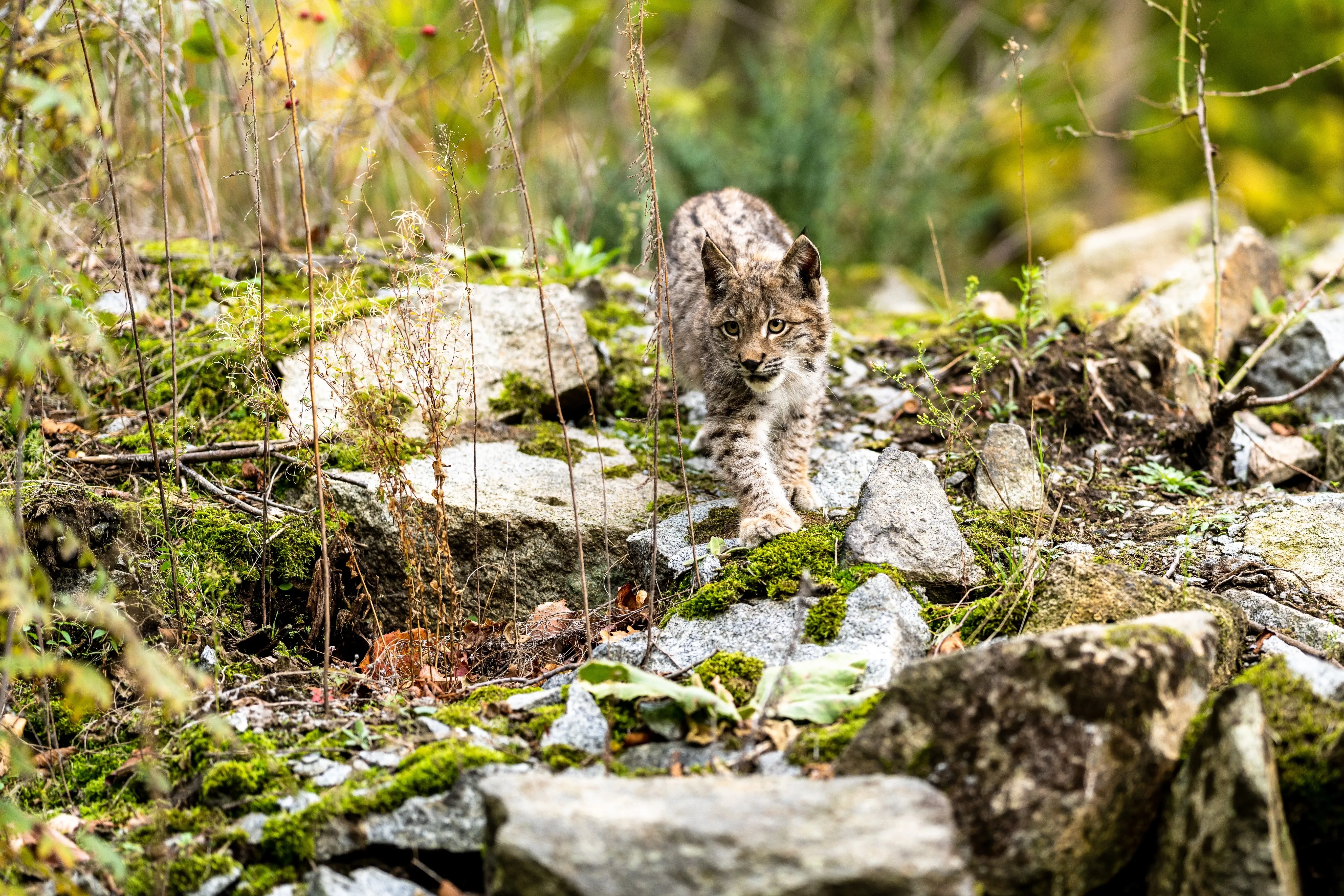
Rewilding at its best
With careful planning, lots of collaboration and ongoing scientific monitoring, Eurasian lynx have been successfully reintroduced into their natural habitats across Europe. Reintroducing an apex predator is far from simple, but the challenges have been overcome in multiple similar projects, which have paved the way for future species reintroductions.
Today, the presence of lynx in a habitat is an indicator of ecosystem health. Their forest homes are some of the most impressive landscapes in Europe and each beckon travellers to explore the ancient tree-lined paths in peaceful harmony with nature.
Sign up for the newsletter
By clicking on “Subscribe now” I will subscribe to the Conscious Explorer newsletter with all the information about mindful travel. Information on the success measurement included in the consent, the use of the shipping service provider MailChimp, logging of the registration and your rights of revocation can be found in our privacy policy.
